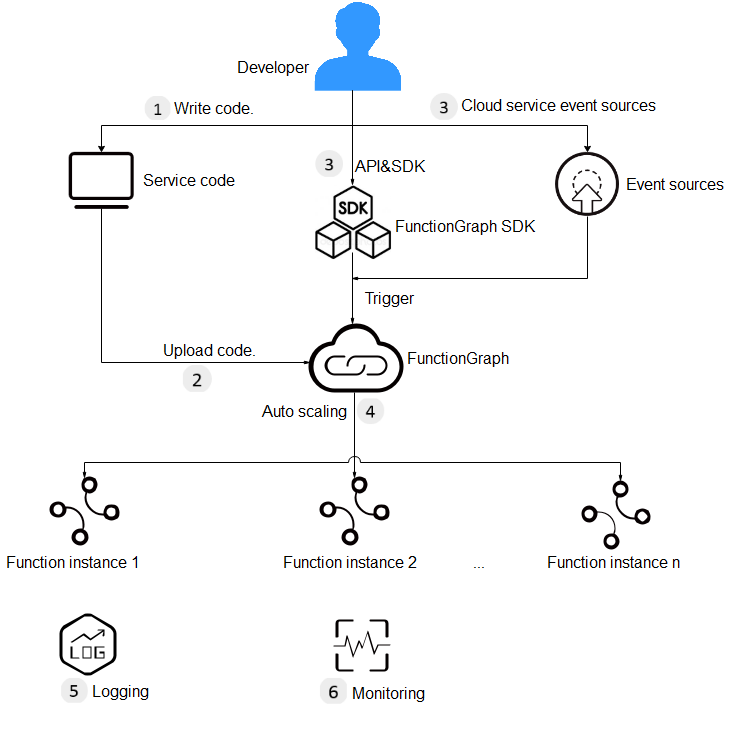Overview
FunctionGraph hosts and computes event-driven functions in a serverless context while ensuring high availability, high scalability, and zero maintenance. All you need to do is write your code and set conditions.
Function Service Process
Figure 1 shows the process of using functions.
Figure 1 Function service process

The process is explained as follows:
- Write code in Node.js, Python, Java, Go, C#, PHP or Cangjie. For details, see the FunctionGraph Developer Guide.
- Alternatively, edit code inline, directly upload a ZIP file, or upload a ZIP file from Object Storage Service (OBS). For details, see Table 2.
- Create an API or set a cloud service event source to trigger the function. For details, see FunctionGraph Getting Started.
- During function execution, FunctionGraph scales automatically based on the number of requests without the need for configurations. For details about the maximum number of function instances that can be run concurrently, see Function Running Resource Restrictions.
- FunctionGraph works with Log Tank Service (LTS), allowing you to query run logs of your function without the need for configurations. For details, see Querying Logs.
- FunctionGraph works with Cloud Eye, allowing you to view graphical monitoring information about your function without the need for configurations. For details, see Function Monitoring.
Parent topic: Service Overview
- Function Service Process